‘Saint Paul’ Category
» posted on Wednesday, July 17th, 2013 by Linda Lou Burton
Hmong Americans
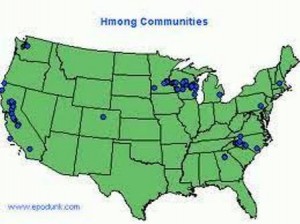 Linda Burton posting from Saint Paul, Minnesota –Saint Paul’s population is 15% Asian, third highest Asian population in the list of capital cities. That’s according to the 2010 US Census, which also denotes specific ethnicity; it tells us that 260,073 people of Hmong descent live in the United States, with the largest Hmong American community right here in Saint Paul. The United States opened its doors to Hmong war refugees with the Refugee Assistance Act of 1975 following the communist takeover of Laos; more than 18,000 Hmong had died in support of US forces during the Vietnam conflict. By 1978 about 30,000 Hmong had immigrated; primarily men directly associated with the war efforts. When the Refugee Act of 1980 was passed, families
Linda Burton posting from Saint Paul, Minnesota –Saint Paul’s population is 15% Asian, third highest Asian population in the list of capital cities. That’s according to the 2010 US Census, which also denotes specific ethnicity; it tells us that 260,073 people of Hmong descent live in the United States, with the largest Hmong American community right here in Saint Paul. The United States opened its doors to Hmong war refugees with the Refugee Assistance Act of 1975 following the communist takeover of Laos; more than 18,000 Hmong had died in support of US forces during the Vietnam conflict. By 1978 about 30,000 Hmong had immigrated; primarily men directly associated with the war efforts. When the Refugee Act of 1980 was passed, families 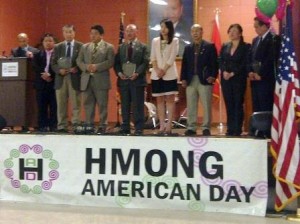 were permitted to come. Political controversy surrounded the remaining Hmong refugees after the 1980 immigration wave – should they be repatriated, allowed to immigrate, or left in the refugee camps in Thailand? Eventually tens of thousands of Thai-based Hmong refugees were granted US immigration rights, leading to highly emotional reunions of long-separated Hmong families. As of the 2010 US Census, the largest Hmong American populations were in California, Minnesota, Wisconsin, North Carolina, and Michigan, with the Saint Paul metro area being home to the largest group. It is a strong and tightly woven community, as immigrants adapt to American culture while still maintaining their homeland
were permitted to come. Political controversy surrounded the remaining Hmong refugees after the 1980 immigration wave – should they be repatriated, allowed to immigrate, or left in the refugee camps in Thailand? Eventually tens of thousands of Thai-based Hmong refugees were granted US immigration rights, leading to highly emotional reunions of long-separated Hmong families. As of the 2010 US Census, the largest Hmong American populations were in California, Minnesota, Wisconsin, North Carolina, and Michigan, with the Saint Paul metro area being home to the largest group. It is a strong and tightly woven community, as immigrants adapt to American culture while still maintaining their homeland  roots. Organizations in Saint Paul that serve the Hmong community are the Hmong American Partnership, founded in 1990 to help Hmong refugees adjust to life in America; the Hmong Cultural Center, founded in 1992 to enhance cross-cultural awareness; and the Hmong Archives, founded in 1999 to collect and preserve Hmong heritage. And the Hmong Village on Johnson Boulevard is a favored destination for any resident of Saint Paul who loves papaya salad, or Pho. » read more
roots. Organizations in Saint Paul that serve the Hmong community are the Hmong American Partnership, founded in 1990 to help Hmong refugees adjust to life in America; the Hmong Cultural Center, founded in 1992 to enhance cross-cultural awareness; and the Hmong Archives, founded in 1999 to collect and preserve Hmong heritage. And the Hmong Village on Johnson Boulevard is a favored destination for any resident of Saint Paul who loves papaya salad, or Pho. » read more
» posted on Monday, July 15th, 2013 by Linda Lou Burton
Mighty Myths and Facts
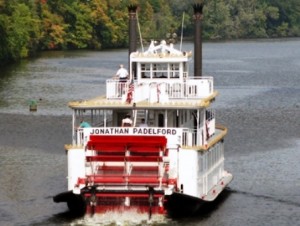 Linda Burton posting from Saint Paul, Minnesota – I went on a cruise today. A Mississippi River Cruise, on a diesel-powered make-believe paddle-wheeler; complete with banjo and song and a few good stories along the way. It was the Lunch and Lock Cruise, a four-hour trip departing from Harriet Island just across the Wabasha Street Bridge from downtown Saint Paul. I’ll tell you some of the tall tales, and I’ll tell you about the river, and the locks; I now hold bragging rights to “locking through Lock #1” on the Mississippi. But first, a tale. As we approached a
Linda Burton posting from Saint Paul, Minnesota – I went on a cruise today. A Mississippi River Cruise, on a diesel-powered make-believe paddle-wheeler; complete with banjo and song and a few good stories along the way. It was the Lunch and Lock Cruise, a four-hour trip departing from Harriet Island just across the Wabasha Street Bridge from downtown Saint Paul. I’ll tell you some of the tall tales, and I’ll tell you about the river, and the locks; I now hold bragging rights to “locking through Lock #1” on the Mississippi. But first, a tale. As we approached a 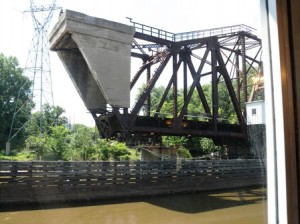 low-built railroad bridge, you know, the kind that swings open to allow tall boats to come through, our narrator directed us to look at the heavy concrete weight on the short end of it. “It took a year to build,” our storyteller said, “and the man who owned the land next to the right-of-way came out every day and sat in his chair to watch construction. Every day, all day. Finally, it was dedication day, and the man attended the ceremonies, at the conclusion of which he notified the railroad that, when open, the bridge encroached on his
low-built railroad bridge, you know, the kind that swings open to allow tall boats to come through, our narrator directed us to look at the heavy concrete weight on the short end of it. “It took a year to build,” our storyteller said, “and the man who owned the land next to the right-of-way came out every day and sat in his chair to watch construction. Every day, all day. Finally, it was dedication day, and the man attended the ceremonies, at the conclusion of which he notified the railroad that, when open, the bridge encroached on his 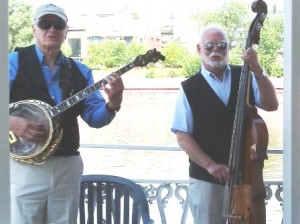 land by a few feet; therefore it could not be used. Railroad officials quickly put their heads together and offered to buy that few feet of land, at the price they paid for land before the bridge was built. The man refused. ‘So now your price has gone up,’ they said. ‘Oh no, my price is the same as it would have been before,’ he replied. ‘And what is that?’ they asked. ‘My price is priceless. The railroad took away my job and ruined my life years ago. I will never sell my land to you, under any conditions.’ The bridge was rebuilt.” » read more
land by a few feet; therefore it could not be used. Railroad officials quickly put their heads together and offered to buy that few feet of land, at the price they paid for land before the bridge was built. The man refused. ‘So now your price has gone up,’ they said. ‘Oh no, my price is the same as it would have been before,’ he replied. ‘And what is that?’ they asked. ‘My price is priceless. The railroad took away my job and ruined my life years ago. I will never sell my land to you, under any conditions.’ The bridge was rebuilt.” » read more
» posted on Saturday, July 13th, 2013 by Linda Lou Burton
Three Men And A Quadriga
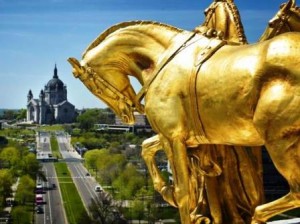 Linda Burton posting from Saint Paul, Minnesota – I won’t lie to you. I was way too chicken to walk out on that upper balcony for a picture of the famous Quadriga. I met two nice women who did though, and shared their pictures with me, so I can show you the awesome sight from high atop the capitol building in downtown Saint Paul. I did take the picture of my car out front, so you can get a perspective of everything I want you to see – the location and size of the Quadriga, and the proximity of the two fabulous domed buildings that bookend John Ireland Boulevard in Saint
Linda Burton posting from Saint Paul, Minnesota – I won’t lie to you. I was way too chicken to walk out on that upper balcony for a picture of the famous Quadriga. I met two nice women who did though, and shared their pictures with me, so I can show you the awesome sight from high atop the capitol building in downtown Saint Paul. I did take the picture of my car out front, so you can get a perspective of everything I want you to see – the location and size of the Quadriga, and the proximity of the two fabulous domed buildings that bookend John Ireland Boulevard in Saint 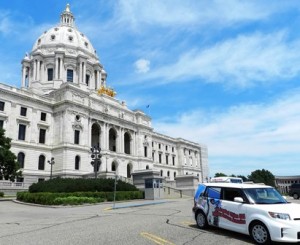 Paul – the State Capitol, which was completed in 1905, and the Cathedral of Saint Paul; construction began on it in 1906. But I’m focusing on the capitol today, and I’ll start with the Quadriga, the shimmery-gold group of sculptural figures named “Progress of the State” perched above the main entrance to the capitol. The grouping consists of a chariot pulled by four horses, and three human figures – two women and a man. The horses represent the classical elements of earth, air, fire and water. The women represent industry and agriculture; together that depicts civilization. The male charioteer represents prosperity; he holds a variation of a Roman Legion standard
Paul – the State Capitol, which was completed in 1905, and the Cathedral of Saint Paul; construction began on it in 1906. But I’m focusing on the capitol today, and I’ll start with the Quadriga, the shimmery-gold group of sculptural figures named “Progress of the State” perched above the main entrance to the capitol. The grouping consists of a chariot pulled by four horses, and three human figures – two women and a man. The horses represent the classical elements of earth, air, fire and water. The women represent industry and agriculture; together that depicts civilization. The male charioteer represents prosperity; he holds a variation of a Roman Legion standard 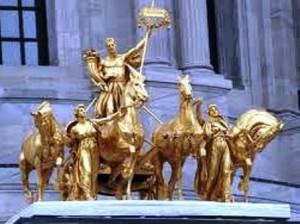 inscribed with the state name Minnesota. The Quadriga is made of copper and gilded in gold, with a few regildings since it first appeared; it was definitely putting on a shine in today’s blazing sun. The quadriga sculptural arrangement goes back over 2000 years to the Roman republic; an emblem of triumph, you’ll find quadrigas on European buildings from Paris to Rome. Sculptors Daniel Chester French and Edward Clark Potter get credit for this one; credit for the capitol goes to Cass Gilbert. » read more
inscribed with the state name Minnesota. The Quadriga is made of copper and gilded in gold, with a few regildings since it first appeared; it was definitely putting on a shine in today’s blazing sun. The quadriga sculptural arrangement goes back over 2000 years to the Roman republic; an emblem of triumph, you’ll find quadrigas on European buildings from Paris to Rome. Sculptors Daniel Chester French and Edward Clark Potter get credit for this one; credit for the capitol goes to Cass Gilbert. » read more
» posted on Thursday, July 11th, 2013 by Linda Lou Burton
The Scoundrel And The Saint
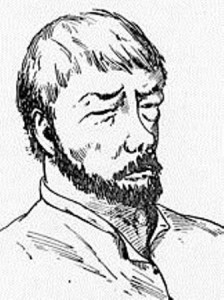 Linda Burton posting from Saint Paul, Minnesota –Every city has both scoundrels and saints in its past, and Saint Paul is no exception. It may have a “saintly” name today, but it started out as Pig’s Eye. Sit back and listen to this tale of two men, and the legacy they left behind. The first character I introduce is Pierre Parrant, a French Canadian born near Sault Ste Marie, Michigan around 1777; he made his living as a fur trapper. He acquired the name “Pig’s Eye” when he became blind in one eye; he began to have troubles with the law when he started bootlegging. Pig’s Eye Parrant claims two distinctions – he was the first person of European descent to live in what became Saint Paul; and he operated the first business there. The second character I want you to meet is Lucien Galtier. He was born around 1811 in Saint Affrique, in the south of France. He became a Roman Catholic priest, and was sent to the
Linda Burton posting from Saint Paul, Minnesota –Every city has both scoundrels and saints in its past, and Saint Paul is no exception. It may have a “saintly” name today, but it started out as Pig’s Eye. Sit back and listen to this tale of two men, and the legacy they left behind. The first character I introduce is Pierre Parrant, a French Canadian born near Sault Ste Marie, Michigan around 1777; he made his living as a fur trapper. He acquired the name “Pig’s Eye” when he became blind in one eye; he began to have troubles with the law when he started bootlegging. Pig’s Eye Parrant claims two distinctions – he was the first person of European descent to live in what became Saint Paul; and he operated the first business there. The second character I want you to meet is Lucien Galtier. He was born around 1811 in Saint Affrique, in the south of France. He became a Roman Catholic priest, and was sent to the 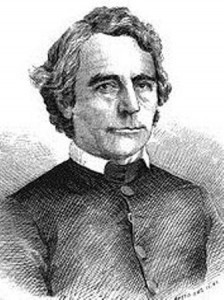 United States as a missionary at the time people were settling near Fort Snelling in Minnesota territory; he arrived at his new post in April 1840. The distinctions he claims are several – he was the first missionary in the area, he built the first churches in what are now the cities of Minneapolis and Saint Paul, and he is responsible for the name of the city of Saint Paul. The church he began in Saint Paul now occupies its fourth building in the city; sitting atop Cathedral Hill and overlooking downtown, it is the third largest church in the United States and a National Shrine. The city of Saint Paul, beginning with the contributions of two men who tackled the wilderness in strikingly different ways, became capital of the state of Minnesota. » read more
United States as a missionary at the time people were settling near Fort Snelling in Minnesota territory; he arrived at his new post in April 1840. The distinctions he claims are several – he was the first missionary in the area, he built the first churches in what are now the cities of Minneapolis and Saint Paul, and he is responsible for the name of the city of Saint Paul. The church he began in Saint Paul now occupies its fourth building in the city; sitting atop Cathedral Hill and overlooking downtown, it is the third largest church in the United States and a National Shrine. The city of Saint Paul, beginning with the contributions of two men who tackled the wilderness in strikingly different ways, became capital of the state of Minnesota. » read more
» posted on Tuesday, July 9th, 2013 by Linda Lou Burton
Narration By Ruth
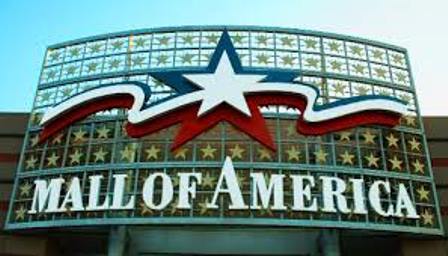 Linda Burton posting from Saint Paul, Minnesota – “The Bible refers to Saint Paul often, but it never mentions Minneapolis.” So goes the good-natured banter between the Twin Cities of Minnesota. I signed up for a Highlights Tour of both; from a Grayline air-conditioned bus I’d listen and try to learn. Minnesota’s oldest tourist attraction and oldest park were promised features of the tour; legends and landmarks and the State Capitol too. But first I had to find the bus, a fear-instilling feat. Because boarding took place at the Transit Center at the Mall of America. And the Mall of America, you see, has 12,550 parking spaces, stacked in cavernous concrete layers on either side of the giant complex. Wrap your head around these numbers – 7 Yankee Stadiums could fit inside the Mall, or 32 Boeing 747’s; 285 Statues of Liberty could lie down for a nap inside the Mall; and if you pulled the President’s heads off Mt Rushmore and hauled them to Minnesota, you could fit one into each of the four courts that make up the Mall. They say if you spent 10 minutes in each store, it would take you 86 hours to complete your visit; there are more than
Linda Burton posting from Saint Paul, Minnesota – “The Bible refers to Saint Paul often, but it never mentions Minneapolis.” So goes the good-natured banter between the Twin Cities of Minnesota. I signed up for a Highlights Tour of both; from a Grayline air-conditioned bus I’d listen and try to learn. Minnesota’s oldest tourist attraction and oldest park were promised features of the tour; legends and landmarks and the State Capitol too. But first I had to find the bus, a fear-instilling feat. Because boarding took place at the Transit Center at the Mall of America. And the Mall of America, you see, has 12,550 parking spaces, stacked in cavernous concrete layers on either side of the giant complex. Wrap your head around these numbers – 7 Yankee Stadiums could fit inside the Mall, or 32 Boeing 747’s; 285 Statues of Liberty could lie down for a nap inside the Mall; and if you pulled the President’s heads off Mt Rushmore and hauled them to Minnesota, you could fit one into each of the four courts that make up the Mall. They say if you spent 10 minutes in each store, it would take you 86 hours to complete your visit; there are more than 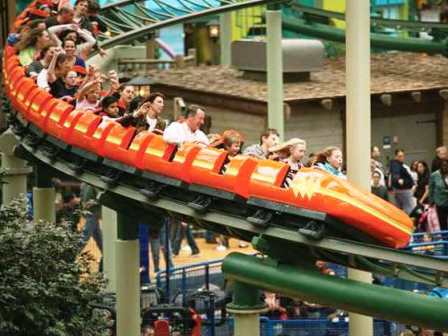 500 stores and 4.3 miles of storefronts; employees number 11,000. Even though “no sales tax on clothing” is a big part of the draw, shopping isn’t the only thing people come for. There are 25 rides and attractions in Nickelodeon Universe, and it’s a huge events center, staging everything from celebrity shows to weddings. Out of the 40 million annual visitors, 4 out of 10 are tourists; today I was one of them. I found the Transit Center by asking a passerby; “Six posts that way,” he said; I parked in Maine 2 East and ventured in. » read more
500 stores and 4.3 miles of storefronts; employees number 11,000. Even though “no sales tax on clothing” is a big part of the draw, shopping isn’t the only thing people come for. There are 25 rides and attractions in Nickelodeon Universe, and it’s a huge events center, staging everything from celebrity shows to weddings. Out of the 40 million annual visitors, 4 out of 10 are tourists; today I was one of them. I found the Transit Center by asking a passerby; “Six posts that way,” he said; I parked in Maine 2 East and ventured in. » read more
» posted on Sunday, July 7th, 2013 by Linda Lou Burton
Pretty As A Picture
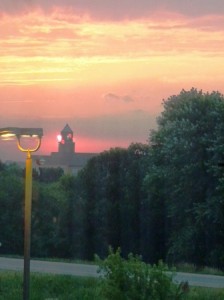 Linda Burton posting from Saint Paul, Minnesota – The sun was up at 5:47, and I was too. I got the first load into the car even before the outside lights shut down; I was determined to beat the heat. Four loads and one orange juice later, we were on the road. The cats went back to sleep right away; I nibbled on the blueberry muffin I’d grabbed, and enjoyed the ease of the drive. A blue sky, a highway stretching straight in front of me, and mile after mile of corn; I could almost hear it growing. If I were a photographer, this is where I’d come for my postcard shots; the farm scenes were pretty as a picture – farmers
Linda Burton posting from Saint Paul, Minnesota – The sun was up at 5:47, and I was too. I got the first load into the car even before the outside lights shut down; I was determined to beat the heat. Four loads and one orange juice later, we were on the road. The cats went back to sleep right away; I nibbled on the blueberry muffin I’d grabbed, and enjoyed the ease of the drive. A blue sky, a highway stretching straight in front of me, and mile after mile of corn; I could almost hear it growing. If I were a photographer, this is where I’d come for my postcard shots; the farm scenes were pretty as a picture – farmers 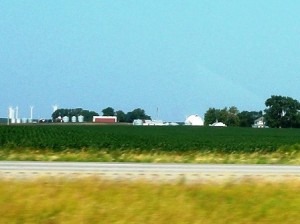 houses tucked in their own personal clump of trees; their barns and silos near; all set in their personal fields of green. I-35 north from Des Moines to Saint Paul, 244 miles on a Sunday in July. I passed the sign to Ames, home of Iowa State University; a little further west is the birthplace of Mamie Doud Eisenhower. It must be hilly there in Boone County; The Boone & Scenic Valley Railroad is there, and Ledges State Park. I stopped for gas in Thornton, two miles off the freeway; no fountain drinks but the friendly lady
houses tucked in their own personal clump of trees; their barns and silos near; all set in their personal fields of green. I-35 north from Des Moines to Saint Paul, 244 miles on a Sunday in July. I passed the sign to Ames, home of Iowa State University; a little further west is the birthplace of Mamie Doud Eisenhower. It must be hilly there in Boone County; The Boone & Scenic Valley Railroad is there, and Ledges State Park. I stopped for gas in Thornton, two miles off the freeway; no fountain drinks but the friendly lady 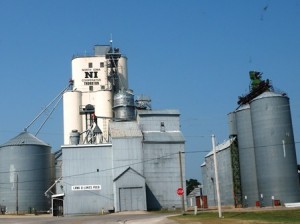 behind the counter directed me to the ice cream freezer where she kept a bag of ice and a scoop; with her scissors she enlarged the hole in the coffee cup lid so I could poke the straw through for my ice-cold Coke. “Too hot for coffee,” we agreed. She was intrigued by the car; wanted to hear about the Journey. I asked about the giant storage silos in the middle of town. “Corn, and soybeans,” was the answer. » read more
behind the counter directed me to the ice cream freezer where she kept a bag of ice and a scoop; with her scissors she enlarged the hole in the coffee cup lid so I could poke the straw through for my ice-cold Coke. “Too hot for coffee,” we agreed. She was intrigued by the car; wanted to hear about the Journey. I asked about the giant storage silos in the middle of town. “Corn, and soybeans,” was the answer. » read more
